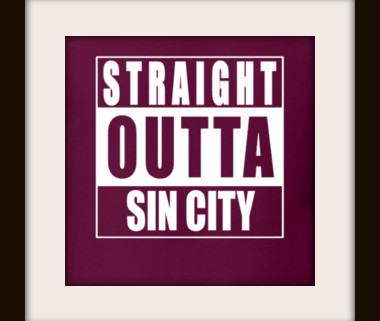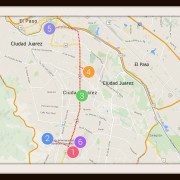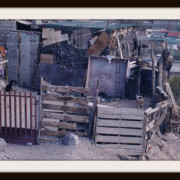Maquilladoras Perspectives: A Composition of Space
People are not machines. That’s an important takeaway from Juárez’s violence. Yet, don’t be too quick to judge.
Let’s talk about Juárez before maquiladoras. The economy of Ciudad Juarez was deeply affected by WWI and WWII, given its proximity to Fort Bliss Military Base, about 20 minutes away by car now. During the first World War, two million soldiers were sent to Fort Bliss. The region developed a very large industry of tourism, bars and nightclubs to serve many of these soldiers, as well as others.
and WWII, given its proximity to Fort Bliss Military Base, about 20 minutes away by car now. During the first World War, two million soldiers were sent to Fort Bliss. The region developed a very large industry of tourism, bars and nightclubs to serve many of these soldiers, as well as others.
Between the two wars was Prohibition, and Ciudad Juárez was the closest place away from U.S. Law. Commerce, Cotton, and Construction were also sources of work, but never as strong.
A friend of my family recalls the time period. He remembers opening the newspaper, looking at the newspapers ads for jobs and reading mainly requests for female bartenders and waitresses. Apparently Ciudad Juárez was known as Sin City.
At the time, some businesspeople from Ciudad Juárez started to  wonder what could be done to improve the city’s future. After much research a brilliant idea came about: bring U.S. manufacturing work to the city. As transportation methods had improved, the location of this border placed Ciudad Juárez in a privileged position. It’s in the dead center of the Country ready to ship goods all around the U.S. The idea was that they could benefit from cheap labor, but Mexico could benefit from learning the trade to foster work like this independently. However, it took a life of its own. Many factories came over, and all the sudden the city was booming with work. The unemployment rate in Mexico during the 1990’s was in negative numbers. There were Maquiladoras(factories) that had stationary signs requesting for workers.
wonder what could be done to improve the city’s future. After much research a brilliant idea came about: bring U.S. manufacturing work to the city. As transportation methods had improved, the location of this border placed Ciudad Juárez in a privileged position. It’s in the dead center of the Country ready to ship goods all around the U.S. The idea was that they could benefit from cheap labor, but Mexico could benefit from learning the trade to foster work like this independently. However, it took a life of its own. Many factories came over, and all the sudden the city was booming with work. The unemployment rate in Mexico during the 1990’s was in negative numbers. There were Maquiladoras(factories) that had stationary signs requesting for workers.
What went unnoticed at the top, while businesspeople were busy “taking care of business” was the rupturing to the Social Fabric that was happening beneath the surface. Since labor was cheap, parents took 2 shifts, at the same time, leaving an inordinate amount of children to themselves.It was the butterfly effect: the wind of a butterfly flapping its wings in one place causing a hurricane somewhere else. Perhaps the sin of the system was that the good people who built new jobs, and brought in a creative new industry to town failed to see their “human resource” as more than just a resource. Perhaps they failed to see their humanness.
was the rupturing to the Social Fabric that was happening beneath the surface. Since labor was cheap, parents took 2 shifts, at the same time, leaving an inordinate amount of children to themselves.It was the butterfly effect: the wind of a butterfly flapping its wings in one place causing a hurricane somewhere else. Perhaps the sin of the system was that the good people who built new jobs, and brought in a creative new industry to town failed to see their “human resource” as more than just a resource. Perhaps they failed to see their humanness.
It was these children who grew up without parents who were the main players in the thick of the violence. It was a disengaged generation. They also underestimated the humanness of their fellow citizens.
This is a story that is developing, and there are always second chances. Perhaps the violence was the shake up needed to wake people up to the depth of the tear in the Social Fabric. Rebuilding IS happening as we speak. I’ll say more on those initiatives in later posts.
ISN welcomes faith & justice related blog submissions from members of the Ignatian family. Please let us know of any blog ideas or posts using this form: ISN Blog Ideas











Leave a Reply
Want to join the discussion?Feel free to contribute!